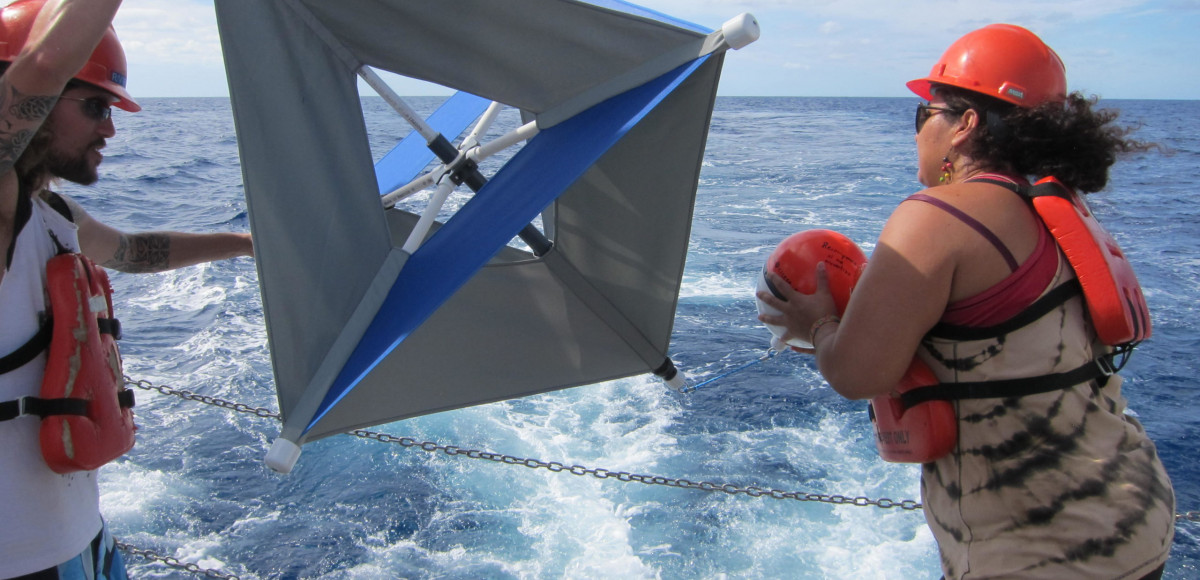
Dates: March 3, 24 & 31*; April 7 & 21
Webinar Times: 9 am PT, 11 am CT, Noon ET
*Please note: The first of the webinar series on March 3 was ended early because of technical issues. We apologize for the inconvenience and have added the March 31 webinar to complete the technical presentations.
- Webinar registration link — you must register to receive log-in information: https://register.gotowebinar.com/rt/2528469246623110160
Webinar Recordings
As the webinars are completed, we will post the recordings on our YouTube channel.
About the Series
During this webinar series, Mexican consortia will present their activities over the past six years in conducting basic and applied research in the Gulf of Mexico, discuss ongoing research, the scientific and technological capabilities they have in place, recent synthesis publications, and ideas for future collaboration in this large marine ecosystem.
The consortia presenters will be from:
- CIGOM (Gulf of Mexico Marine Science Research Consortium)
- CEMIE-Océano (Mexican Center for Marine Energy Innovation).
Webinars will be conducted in English.
The Spring Webinar series will focus on the consortia’s observations, scientific contributions and innovations developed, as well as databases, models, human capacities and physical infrastructure.
The webinars are meant to reach a U.S. audience that may or may not be familiar with CIGOM and CEMIE-Océano (such as federal and state agencies involved in ocean management and research, and the private sector).
Each webinar session will emphasize past and ongoing research and ocean monitoring efforts together with technological developments in Mexico in support of preparedness, advancement of marine observations relevant to the advancement of science and technology and management effectiveness.
Through this series, organizers hope to spark interest in international collaborative research and applied efforts of the academic, joint academic and private, and government sectors in support of an increased understanding of the entire Gulf of Mexico, its blue economy in support of future generations.
This series builds on an effort hosted by Texas A&M University (TAMU) and the Society for Underwater Technology (SUT) in 2018, when representatives of CIGOM presented the objectives and activities of their work groups. It is a collaboration among GCOOS, TAMU, SUT-US, N2N-GoM — the Network-to-Network for the Gulf of Mexico — CIGOM and CEMIE-Océano. Organizers are Jorge Brenner, Executive Director, GCOOS, TAMU and IOOS, Sharon Herzka, CIGOM and CICESE and Zenon Medina-Cetina, TAMU and N2N-GoM..
March 3: Introductions and Overview: GCOOS, SUT-US, N2N-GoM, CIGOM and CEMIE-Océano* and Gliders
- These introductions and the Gliders overview with Enric Pallas are posted to our YouTube page. Watch them here
*Please note that the technical overview during this webinar was originally scheduled to include “HFR and Database Management System,” but ended early due to Internet issues. This portion of the webinar is now rescheduled for Thursday, March 31.

March 24: “Numerical Modeling and Oil Spill Scenarios”
Time: 9 am PT, 11 am CT, Noon ET (one hour webinar)
Circulation Models
During the CIGOM project (2015-2020), several long-term simulations with realistic forcings but without data assimilation were carried out in order to study the circulation in the Gulf of Mexico and its variability and to evaluate different configurations of the model. Simulations were performed and evaluated using NEMO, ROMS and HYCOM models. These results are presented in an Atlas, in addition to other scientific documents. Here we present some of the maps included in Volume II of the Baseline Atlas on Ocean Circulation and Waves, and how a combination of maps represents the complex circulation of the Gulf of Mexico.
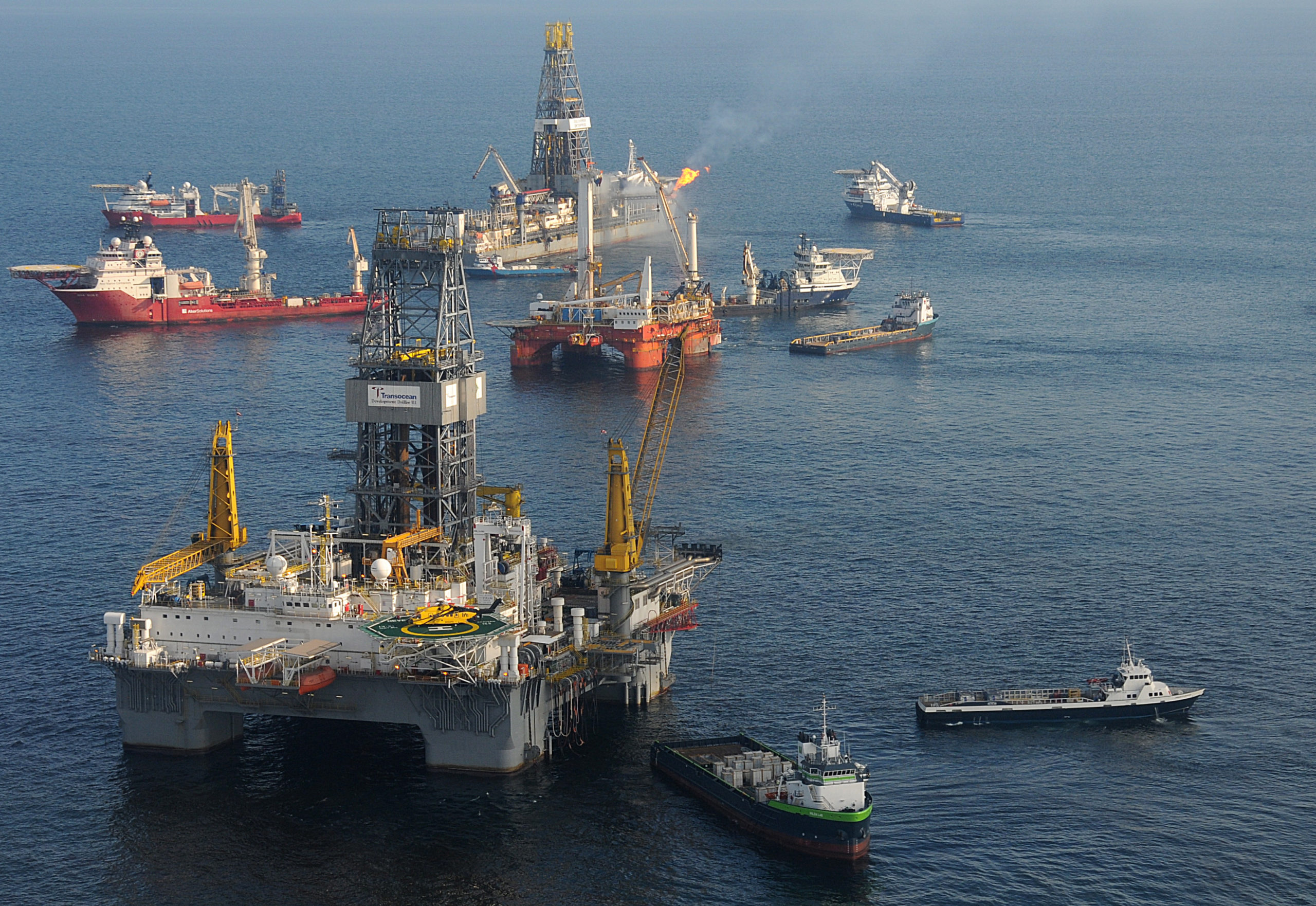
Physical-Biogeochemical Modeling of the Gulf of Mexico during the CIGOM Project
During the CIGOM project (2015-2020), configurations of the coupled physical-bigeochemical models NEMO-PISCES and ROMS-FENNEL were developed for the gulf of Mexico. NEMOS-PISCES was used to understand the role of eddies in the seasonal and interannual variability of chlorophyll concentration (Damien et al., 2018, https://doi.org/10.1002/2017JC013456 ) particularly the processes in anticyclones (Damien et al 2021, https://doi.org/10.5194/bg-18-4281-2021).
ROMS-FENNEL was used to investigate the nitrogen budget in the Yucatan shelf and its driving mechanisms (Estrada-Allis et al, 2020, https://doi.org/10.5194/bg-17-1087-2020). We provide a summary of their main results as well as current and near future observational and modeling efforts.
Oil spill scenarios
Methodological approximation, examples, and potential applications. Several ocean circulation models and surface wind products were used to generate oil-spill scenarios for the western Gulf of Mexico for six potential deep-water wells. The oil-spill simulations were obtained using a fully comprehensive 3D oil-spill model as well as simpler 2D Lagrangian and Markov chain models that include oil decay to parameterize weathering. A summary of the methodology and metrics used to establish the regions possibly affected and estimated time of arrivals, with emphasis on the similarities and differences among model results, is presented. Examples of how these results have been used to establish potential environmental impacts at different biological organizational levels and geographical scales are mentioned, the incorporation into contingency plans to help allocate resources and help decision makers plan ahead for such an emergency.
Agenda
- Circulation models — Jorge Zavala (ICACC UNAM)
- Physical-Biogeochemical Modeling of the Gulf of Mexico — Julio Shienbaum, (CICESE)
- Oil spill scenarios: Methodological approximation, sample results and potential application — Paula Pérez (CICESE)
Questions/Discussion
Presenter Bios
Dr. Jorge Zavala Hidalgo, Director, Instituto de Ciencias de la Atmósfera y Cambio Climático (ICACC), National Autonomous University of Mexico (UNAM). Dr. Zavala is a physicist and graduated from the UNAM’s Faculty of Sciences. He has a master’s degree in Marine Sciences from UNAM and a doctorate in Sciences in Physical Oceanography from the Center for Scientific Research and Higher Education of Ensenada (CICESE). He did a postdoctoral fellow at the Center for Ocean-Atmospheric Prediction Studies at Florida State University and spent two years as a visiting researcher at that institution. He is currently a Full Researcher Level C and a member of the National System of Researchers (SNI) Level 3. He has been Editor-in-Chief of the magazine Atmósfera, Head of the National Tide Service operated by UNAM, General Coordinator of the National Meteorological Service and is currently Head of the Institute for Atmospheric Sciences and Climate Change (IASCC) of UNAM.
He has developed research on ocean-atmosphere interaction processes, focusing on climate variability in Mexico, including climate change, as well as the variability of sea level, the dynamics of the Mexican seas and coasts. For the last 14 years, he has implemented and maintained in operation numerical meteorological forecasts, ocean circulation, waves, storm surge and dispersion of volcanic ash.
He has supervised bachelor’s theses, master’s and doctoral theses, as well as eight postdoctoral fellows. He formed the Ocean-Atmosphere Interaction Group at the Institute of Atmospheric Sciences and Climate Change. He led the modernization of the National Mareographic Service, achieving considerable progress in studies on sea level variations due to climate change, tsunamis and storm surge.
Dr. Julio Sheinbaum is a specialist in numerical modeling (physics and biogeochemistry) and in the collection, analysis and assimilation of data for oceanic and meteorological forecasting, in particular of the Gulf of Mexico and the Caribbean Sea. Dr. Sheinbaum is Researcher Level D at CICESE and Level III in Mexico’s National Researcher System (SNI).
He completed his undergraduate and master’s studies in Physics at the Faculty of Sciences at UNAM (1978-1985), and his doctorate at the University of Oxford in the United Kingdom (1985-1989). Since 1991, he has worked as a researcher in the Department of Physical Oceanography at CICESE in Ensenada, Baja California.
He is author or co-author of 70 scientific articles, eight book chapters and co-editor of two research books on geophysical fluid dynamics. He has been thesis director of several undergraduate, masters and doctoral students.
He was coordinator of the Work Group on Numerical within the Gulf of Mexico Research Consortium (CIGOM) financed by the SENER-CONACYT fund (2015-2021) for the establishment of a baseline and the generation of scenarios and risks in the event of possible oil spills in the Gulf of Mexico. He is a founding member of the CANEK-CICESE research group and co-PI of the PEMEX-CICESE projects.
Dr. Sheinbaum participates in the numerical modeling group for the study and prediction of the Loop Current in the Gulf of Mexico financed by the National Academy of Sciences of the United States (2018-2025) and in the FORESEA project financed by France for the study and prediction of the Sargassum in the Atlantic.
He is also the Principal Investigator for a Sinergia-Conacyt project on phytoplankton blooms in eddies of the Loop Current in the Gulf of Mexico, and numerical modeling coordinator for the extension of the CIGOM project. He participates in various scientific committees (Sargazo-Conacyt, IOCARIBE-UNESCO, and Ocean Decade 2021-2030).
Dr. Paula Pérez-Brunius’ research interests have ranged from physical processes that occur at large ocean scales such as the meridional circulation in the North Atlantic, to increasingly smaller scales such as those involved in the mixing and dispersion of tracers in the Gulf of Mexico. Also of interest are the biophysical interactions relevant to the population dynamics of marine species in the region near the Pacific coast of Baja California and in the Gulf of Mexico, as well as processes involved in biogeochemical cycles. Her main working tool is the analysis of data obtained in the field, with particular interest in data measured by Lagrangian instruments. In the last seven years she has been actively involved in the interdisciplinary and multi-institutional project of the Research Consortium of the Gulf of Mexico (CIGOM), financed by the SENER-CONACYT-Hydrocarbons fund (Mexico).
In CIGoM, she coordinated the effort to obtain a first approximation of the regions, species, and ecosystems that could be affected by large-scale spills in the deep waters of the western Gulf of Mexico, which were published as a literary collection available publicly (https://escenarios.cigom.org/en/). She was actively involved in generating the oil spill scenarios used for the global assessment that led to the results published in the collection. She designed and executed in-situ Lagrangian experiments and was involved in the analysis to study dispersion and advection of tracers in the western and southern Gulf of Mexico, including biological connectivity via of larval dispersion.
March 31: “HFR and Database Management System”
Time: 9 am PT, 11 am CT, Noon ET
HF Radars
The Mexican high frequency radar network, challenges and perspectives”. In 2009, Dr. Flores and his collaborators started to develop the Mexican high frequency radar network, which took several years and several instrument tests (we went through all HFR brands) to reach a balance between cost and operational instruments in the field over the long term. To date, our group in Mexico has installed roughly 25 HFR, 8 in the northern Mexican Pacific, 15 in the Gulf of Mexico and 2 at the Caribbean. The current status of the arrays and and historical data sets from those radars will be presented, and the challenges from the technical point of view and from the economic side analyzed. We will also discuss the future of the HFR network.
SMID
The Comprehensive Data Management System (or SMID) has the mission of defining the methodology and formats for the consolidation of the data generated by CIGOM based on widely adopted international standards. Offers data hosting services, data distribution and metadata in multiple formats, web environments for analysis, and interactive web visualization). The talk will briefly cover the different observation platforms that CIGOM has, as well as SMID.
Agenda
-
- High Frequency Radars — Xavier Flores (UABC)
- SMID (Comprehensive Data Management System, or SMID) — Favio Medrano (CICESE
Questions/Discussion
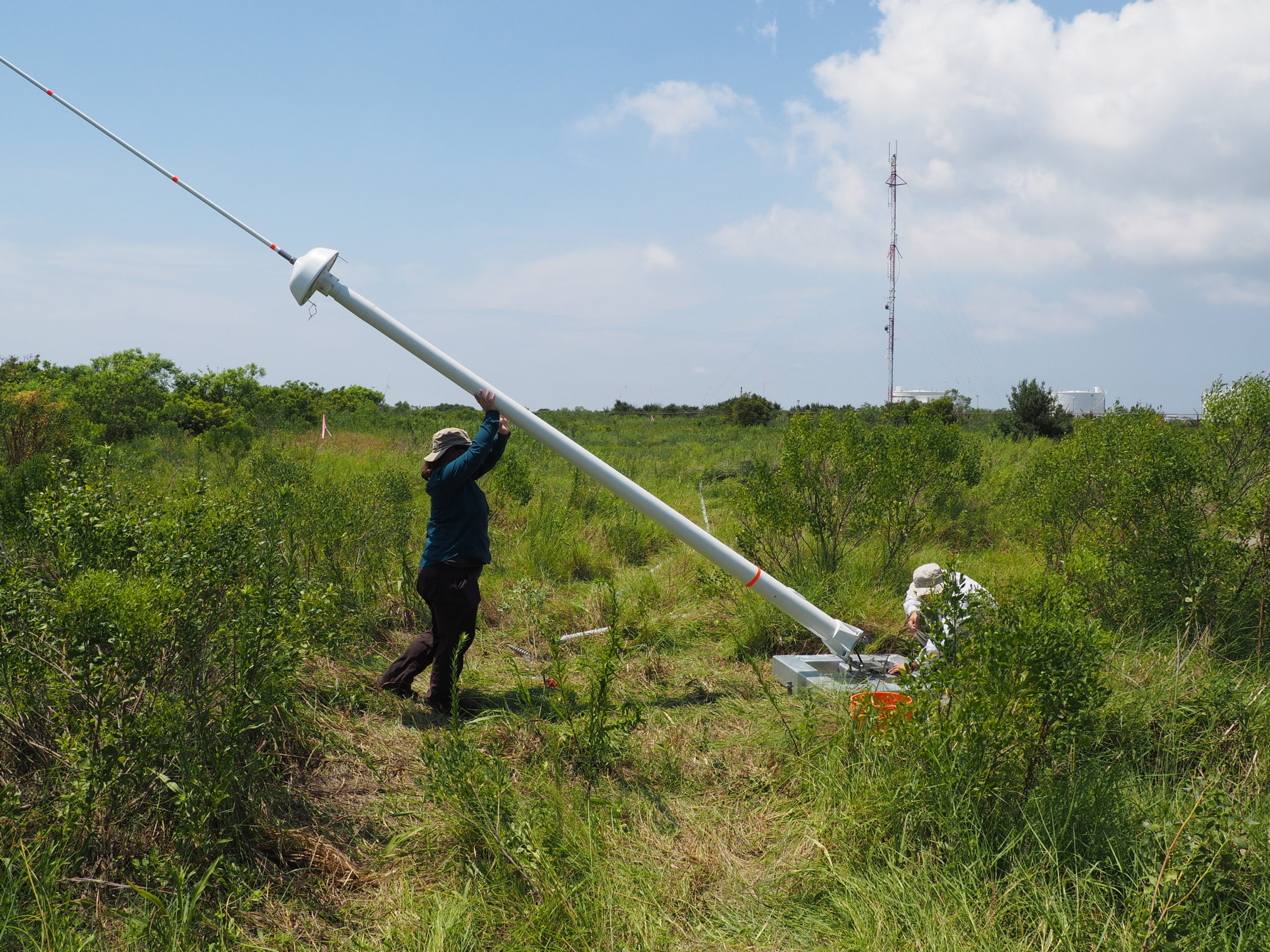
Presenter Bios
Please note: Dr. Enric Pallàs-Sanz gave his presentation on gliders during the first webinar in the series that was cut short when the meeting was interrupted. You can view his session here.
Dr. Enric Pallàs-Sanz is a research scientist at Centro de Investigación Científica y Educación Superior de Ensenada (CICESE) and has been working the last 12 years on topics related to mesoscale vertical velocity of balanced vortical flows (eddies and fronts), unbalanced flows (near-inertia gravity waves), and wave-mean flow interactions. He has made significant contributions on developing and implementing a generalized version of the omega equation to diagnose mesoscale vertical velocity from density and horizontal velocity data. Since 2016 he is leading the Group of Monitoring the Ocean with Gliders (GMOG) who´s mission is monitoring, at high-resolution, the vertical, thermohaline and kinematic, structure of the Loop Current Eddies (LCEs) in the Gulf of Mexico (https://gliders.cicese.mx). His recent publications have provided new insights on frontal and vortex dynamics using different platforms of observation, namely, Seasoar, mooring, drifter, and glider data. Using mooring data from the Donnut Hole area in the Loop Current System, he has published two papers regarding the near-inertial response of the ocean to the passage of hurricanes over the Loop Current. He is co-author of 21 publications (2017-2021) on mesoscale vertical velocity, inner shelf dispersion, structure and dynamics of mesoscale eddies from basin scale (heat and salt content) to small scale (layering), water mass distribution and transformation within the eddies; and the deep circulation in the Gulf of Mexico using observations (gliders and moorings) and numerical modeling. Member of Mexico’s ‘Sistema Nacional de Investigadores’ (SNI) with level I. Professor at the Postgraduate school at CICESE teaching Data Analysis in Oceanography and associate professor in the Centro de Investigación en Ciencia Aplicada y Tecnología Avanzada of the Instituto Politécnico Nacional.
Dr. Xavier Flores-Vidal has a Physics BSc degree, physical oceanography MSc degree and Coastal Oceanography PhD degree, he specialized in Radio Oceanography during a postdoc at the University of Hawaii at Manoa. Since 2012, Flores-Vidal is a faculty researcher of the Instituto de Investigaciones Oceanológicas at the Autonomous University of Baja California, Mexico. His more relevant projects are “The Gulf of Mexico Radar Network,” design and construction of low cost, long autonomy drifters with RT telemetry, and the first real time ocean observatory (https://oorco.ens.uabc.mx). Flores-Vidal has published about 20 papers in journals such as Journal of Atmospheric and Ocean Technology, Journal of Geophysical Research and Frontiers in Marine Science, has graduated about 11 students, has been PI of about 10 research projects and chief scientist of about 30 oceanographic cruises. Flores-Vidal is committed to produce high quality ocean data using open-source instrumentation, low cost methodologies, real-time observatories and mentoring students.
Hernán Favio Medrano Jaimes is a technical specialist in scientific computing for the Computing Science Department at CICESE. He is a member of the Mexican Supercomputing Network (REDMEXSU) and also participates as the Data Warehouse Manager for the CIGOM (https://cigom.org/) and the CANEK (https://cicese-pemex.cicese.mx/) Projects. His areas of expertise are software engineering, parallel computing, and Big Data solutions.
April 7: “Environmental Baseline and Marine Biogeochemistry”
Time: 9 am PT, 11 am CT, Noon ET (one hour webinar)
Faced with the need to integrate the results of dozens of cruises performed by the Gulf of Mexico’s Research Consortium (CIGOM) financed by Mexico’s CONACYT-SENER Hydrocarbon fund (2015-2022), we developed a software package with an online interface that (1) supports detailed expedition planning, (2) allows for real-time documentation of the outcome of a cruise or monitoring plan, (3) generates cruise reports including detailed sample inventories, (4) couples discrete hydrographic data from CTDs with sample inventories, and (5) implements a common data structure for storing a wide variety of data ranging from hydrography to biogeochemical parameters, rate measurements, contaminants and community composition following the classification of WORMS.

The relational database has an online user-friendly interface that allows for targeted searches with a wide variety of filters and download formats, and the software can be easily adapted to capture data from past or future expeditions independent of the original data format and could provide a valuable tool for data management and sharing.
The environmental baseline database reflects the analysis of more than 85,000 samples collected during 19 oceanographic cruises focused on the deep-water region of the Mexican EEZ and the Yucatan shelf, and 12 seagrass monitoring surveys on the coasts of Campeche and Yucatán. It contains a wide spectrum of variables, including hydrographic (CTD) data, concentrations of dissolved gases, metals, hydrocarbons, pigments photosynthetic, and isotopic compositions of different organic and inorganic components, as well as biological communities in the water column, demersal or benthic habitat and sediments. It also contains
chemical, molecular and physiological analysis of organisms associated with the seabed. sensors and specialized equipment that allows hydrographic characterization. The database has over 12,000,000 records, it is available through of an easy-to-use web platform with access through a permit system (it is currently not public).
The Environmental Baseline Atlas of the Gulf of Mexico is a geographical representation of the physical, chemical, biological and ecological characteristics of the ecosystem that is mainly focused on the Exclusive Economic Zone of Mexico. This region is of strategic importance since it supplies natural resources, harbors high biodiversity, sustains tourism, and provides ecosystem services, which are closely linked to social well-being and the national economy. The content is derived from the research effort carried out between 2015-2020 by specialists from different disciplines that make up the Gulf of Mexico Research Consortium (CIGoM). It is comprised of eleven volumes that show the prevailing conditions of climate, circulation and waves, as well as hydrographic, bio-geochemical, biological and ecological patterns. It represents the most extensive oceanographic characterization of the southern Gulf of Mexico, and is an indispensable tool for planning and decision-making.
Geochemistry of the GM: This presentation will show some of the most outstanding findings the research teams are reporting from the biogeochemistry of the water column and sediments of the southern deep water region of the Gulf of Mexico. New data on oxygen concentrations suggest the importance of the Loop Current Eddies shedding into the interior of the Gulf as the main control on the ventilation of its intermediate waters. Surface ocean data on chlorophyll show the importance of mixing and recycling to control the derived satellite patterns of biological productivity of the pen ocean waters of the Gulf. Nutrient concentration data show the importance of the mesoscale dynamics to understand the distribution of phosphate, nitrate and silicic acid in the interior of the Gulf. New data of the inorganic carbon system from the Campeche shelf show the importance of the input of underground fresh waters to the coastal region. New data from sediment accumulation rates in the southern deep water region of the Gulf show the importance of the controls by lithogenic and biogenic sedimentation rates to control the sedimentation patterns of the continental slopes and abyssal plain.
Agenda
- Environmental database and SGEO (Platform for the management of oceanographic expeditions), Environmental Baseline Atlas — Sharon Herzka (CICESE)
- Geochemistry of the Gulf of Mexico — Juan Carlos Herguera (CICESE)
Questions/Discussion
Presenter Bios
Dr. Sharon Herzka is marine ecologist focusing on using fishes, isotope ecology and oceanography. She is a Researcher Level D at CICESE and Level III in Mexico’s National Researcher System (SNI). She has co-authored 50 peer-reviewed publications to date and has several in review. Together, her publications reflect national and international interdisciplinary collaborations with top-level institutions and include work with physical oceanographers, bird and marine mammal ecologists, molecular biologists, and bioinformaticians, among others. During the last ten years, most of her research has focused on the oceanography of the Gulf of Mexico, with an emphasis on larval fish community structure and dispersal as well as nutrient and carbon sources in the deep-water region (>1000 m) of the Mexican EEZ. She has advised 20 graduate students and supervised three postdoctoral fellows, and served as Head of the Department of Biological Oceanography between March 2018-July 2021.
Within the scope of the CIGOM project funded by the CONACYT-Ministry of Energy Hydrocarbon Fund that gave rise to the Research Consortium for the Gulf of Mexico (CIGOM): She was the Coordinator of Working Group 2 (Baseline and Environmental Monitoring), and responsible for coordinating, supervising, and documenting the activities and results of 9 subprojects. She was also co-PI of the XIXIMI subproject within Working Group 2, which focused on generating an environmental baseline of the GoM deep-water region of Mexico’s EEZ and the Yucatan Channel through extensive sampling of the water column, sediments and marine communities. In addition, she was the supervisor and scientific editor of the eleven-volume professionally-edited and illustrated publicly available document presenting the most extensive characterization of an oceanographic system in Mexico’s history (https://atlascigom.cicese.mx). In addition to being a fundamental hallmark contribution to the scientific knowledge of the GoM, the Atlas provides essential information for the conservation and sustainable management of the GoM. Under her esponsibility and coordination, the most extensive database in the history of Mexican oceanography, which includes over 75 sets of variables generated in dozens of laboratories, was created. The database supports interdisciplinary collaborations and allows for unprecedented GoM-wide environmental analyses and research.
Dr. Juan Carlos Herguera is an oceanographer and marine geologist working at the Centro de Investigación Científica y de Educación Superior de Ensenada (CICESE). His research group studies the role of past climate variability in ocean circulation and the ocean carbon cycle in the Eastern Pacific, the California Current, and the Gulf of California and in the Gulf of Mexico. These studies are based on water column studies and paleoceanographic reconstructions from high resolution sediment records, at interdecadal to centennial and millenial timescales with the goal of understanding the natural variability during the Holocene, and the emerging trends introduced by the anthropogenic-driven climate change.
During the last decade, he has been engaged in studies of the carbon cycle in the water column and recent sediments in the Gulf of Mexico, to establish an observational network of fixed and mobile instruments, the baseline of this large ecosystem and the effects and trends introduced by climate change and large-scale hydrocarbon spills. This endeavor has led to the establishment of a network of several research and higher education institutions in Mexico funded by the National Mexican Research Council for Research and Technology (CONACYT) and the Secretary of Energy (SENER) to carry out a multi-institutional multidisciplinary project carried by the CIGOM Consortium, constituted by nine Mexican research and education institutions with collaborations from another eight Mexican, and six international oceanographic research institutions.
He has published more than 50 papers and has been responsible for 15 projects funded by national and international funding agencies and been director to three PhD and 13 MSc students and is currently advising three PhD candidates.
April 21: “Renewable Energies and Technological Developments”
Time: 9 am PT, 11 am CT, Noon ET (one hour webinar)
Development of devices for marine energy harvesting: The advances and tests regarding devices for wave, ocean current and saline gradient energy capturing and conversion will be shown and discussed. The devices we have worked in include WECs (OWC and point absorbers), vertical and horizontal axis turbines and Reverse Electro Dialysis cells for electricity production.
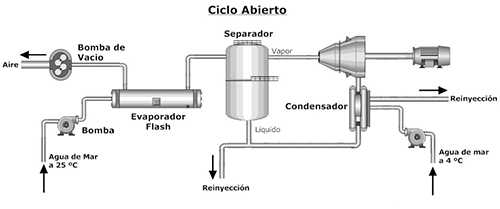
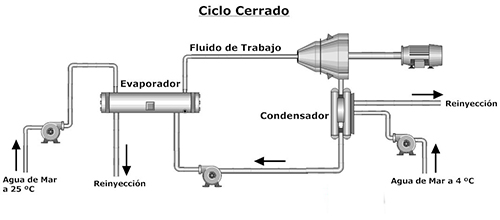
Marine renewable energy potential of tidal and oceanic currents in México: Resource assessment and environmental considerations: Tidal and oceanic currents in Mexico (Gulf of California and Caribbean Sea respectively) have a good potential for energy generation due to its persistency/predictability and strength. They are also close enough to the continent, due to abrupt bathymetry changes, therefore connection to the national grid is easier. Nevertheless, technological challenges still exist for low-velocity scenarios, which is the most common around the world. A combination of numerical modelling, satellite altimetry and in-situ measurements has been conducted to assess the energy availability in the Yucatan current, focusing on the Cozumel Channel, and in the Gulf of California. This presentation will show an evaluation of the energy potential of tidal and oceanic currents in Mexico and some possible environmental threats to take into account to ensure that the activity is truly a sustainable energy option.
The Mexican Underwater Glider – Underwater Robotics: this webinar presents the research and development results of the Mexican Underwater Glider called Kay Juul 2 (from de maya “Row Fish”). This prototype was successfully tested in sea trials in Ensenada, Baja California in August 2021. This presentation includes an overview about the design and the characterization of the main mechanical systems and the general methods used to obtain a functional development. The main features of the Mexican glider prototype will be presented to identify the improvements for the next version of the vehicle.
Agenda
- Development of devices for marine energy harvesting — Edgar Mendoza (IIUNAM)
- Marine renewable energy potential of tidal and oceanic currents in México: Resource assessment and environmental considerations — Ismael Mariño Tapia
- Socio-environmental impact of marine energy harvesting — Ma. Luisa Martínez (INECOL)
- The Mexican Underwater Glider — Underwater Robotics Juan Pablo Orozco (CIDESI)
Questions/Discussion
Presenter Bios
Dr. Edgar Mendoza is a full time researcher at the Engineering Institute of the National Autonomous University of Mexico. Head of the Hydraulics Department.
He has a PhD in Civil Engineering specializing in coastal processes and protection and more than 15 years leading the Coasts and Ports Laboratory where experiments on coastal engineering and where marine energy conversion are performed.
He has published more than 90 international journal scientific papers and has been advisor for more than 80 students’ thesis. Within CEMIE-Oceano he leads the numerical and physical modelling group where several concepts and devices have been tested and improved.
Dr. Ismael Mariño Tapia is with Escuela Nacopnal de Estudios Superiores (ENES) Unidad Mérida
Universidad Nacional Autónoma de México (UNAM). He obtained his PhD at the University of Plymouth, UK, with a thesis entitled: Cross-shore sediment transport processes and its relation to sandbar dynamics. In this work, he focused on beach and sediment dynamics using field data, and used a data-derived parameterization (shape function) to simulate sand bar migration patterns. After finishing his PhD he worked as a postdoc on the COASTVIEW project, aimed to use video-derived coastal state indicators to aid coastal management (beach erosion, navigation and recreation). From May 2005 he started as a researcher at CINVESTAV, a federal research institution, leading the Coastal Processes and Physical Oceanography Laboratory. The research topics that he has been working on include shelf circulation, beach morphodynamics, hydrodynamics of coastal and reef lagoons and characterization of submarine groundwater discharges in the coastal zone. During the last four years he has focused on multi-criteria assessments of oceanic currents for energy production. He has also participated on 11 oceanographic services to the oil industry, carrying out oceanographic cruises measuring currents and CTD in the southern Gulf of Mexico. He has published 68 peer-reviewed research papers, has supervised nine PhD theses, 12 MSc dissertations and 10 BSc projects. He has become enthusiast on applying his research to the decision-making process for achieving better practices in coastal management and promoting the use of ecosystems for coastal protection. He now a full professor at ENES-UNAM México, and is heavily involved in undergraduate teaching.
Dr. María Luisa Martínez Vázquez is a Senior Researcher at the Institute of Ecology (INECOL) in Xalapa, Veracruz, Mexico. She has a PhD in Ecology and Environmental Sciences, and her studies focus on coastal ecosystems, mostly beaches and coastal dunes. She studies the ecology of the beach and coastal dunes, how to restore these ecosystems and the ecosystem services they provide. She has published nearly 100 scientific papers, 16 books and 20 book chapters (https://www.researchgate.net/profile/M_Martinez5). She works in the CEMIE-Océano project (https://cemieoceano.mx/) to study and mitigate the potential environmental impact that ocean-energy devices could have in the environment.
Her systemic analysis of the potential environmental impact and environmental perception of MRE will be presented during the webinar, along with a diagnosis of the potential energy production sites along Mexican coasts considering socioeconomic needs and environmental restrictions.
Dr. Juan Pablo Orozco Muñiz completed his studies in mechatronics engineering and a master’s degree in mechanical engineering in the University of Guanajuato, obtaining the grades in 2010 and 2014 respectively. In 2021, he obtained his PhD in Science and Technology at the federal research center CIDESI, specializing in the design and development of mechanical systems, working with Dr. Tomás Salgado. He is researcher at Center for Research and Industrial, Development (CIDESI-México), where he has been working in underwater robotics since 2005.
From 2012 to 2015, Dr. Orozco was an associate professor at the University of Guanajuato and the Technological Institute ITESI. He has participated as an external specialist in important projects such as the Mexican Wind Machine (MEM) and CIGOM (Gulf of Mexico Research Consortium) through the Federal Research Centers CIATEQ and CIDESI, respectively. He is currently an associate professor at the Anahuac University Campus Querétaro and the Arkansas University Campus Queretaro and continues to collaborate as an external specialist in the CIGOM Consortium in the line of underwater gliders.
He has published various technical-scientific papers in indexed journals and forums of international recognition. His main lines of research are underwater robotics and the design of complex mechanical-mechatronic systems. The main application fields are the underwater glider technology and ROVs tooling development.
Important Links
- Scenario publications: https://escenarios.cigom.org/en/
- Gulf of Mexico environmental atlas: https://atlascigom.cicese.mx














